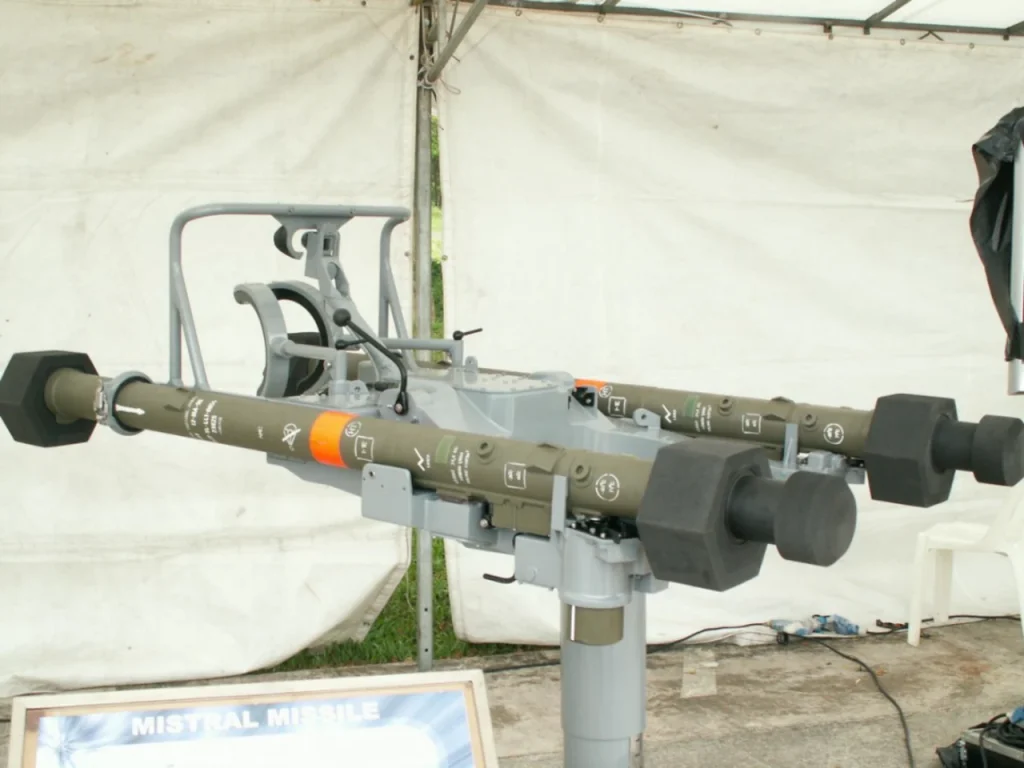At the global defence and security event, Eurosatory 2022, that took place in Paris in June this year, European firm MBDA and India’s Bharat Dynamics Limited (BDL) signed an agreement to manufacture the Mistral missiles in India.
The two companies have had a robust relationship, reflected in several agreements over the years. In 2019, MBDA inked a Memorandum of Understanding with India’s Bharat Dynamics Limited (BDL) for the final assembly, integration and test (FAIT) of Mistral and Advanced Short Range Air-to-Air Missiles (ASRAAM) in India.
The deal, announced at Defense and Security Equipment International in London in September 2019, expanded on MBDA and BDL’s long-standing collaboration. MBDA stated that it has collaborated with BDL in Hyderabad for 50 years, during which more than 50,000 MBDA-designed missiles have been manufactured in India. In August 2021, following this development, the two firms signed a licencing agreement to establish the facility in India.
India already relies on MBDA missiles to power its military assets. The firm prides itself on its comprehensive product catalogue and on being the only company that is able to meet the guided weapons requirement of all three armed forces- the air force, army, and navy. The most prominent use of the European firm’s munition is seen with India’s Rafales. The French fighter jet uses the powerful SCALP, Meteor, and Mistral missiles- all manufactured by MBDA. In addition to this, the company has also provided the Indian Army and the Indian Navy with lethal armament. The former’s use of MILAN– a man-portable anti-tank guided missile (ATGM) that BDL has a license to build– is widely known, while the latter is known to use MBDA’s Exocet anti-ship missile.
However, the MBDA projectile that has made the most ripples recently is the Mistral missile that has been selected and integrated into the Air-to-Air Missile (ATAM) helicopter launch systems of indigenously developed Light Combat Helicopter (LCH) and Advanced Light Aircraft (ALH) Dhruv.
Mistral Air-to-Air missile
The Mistral missiles can be counted on the list of one of the most powerful short-range missiles made by MBDA. Mistral-1 was the baseline model, while Mistral-2 was an improvement of its predecessor. Mistral 3 is the latest missile in the series; it features some upgrades over Mistral 2.
India had successfully conducted weapon integration tests of the Mistral 2 ATAM on its indigenously built choppers. Mistral 2 is a portable short-range air defence (SHORAD) missile system that personnel can launch from land vehicles, surface ships, and fixed and rotary-wing aircraft. It is a fully digital, heat-seeking munition. Reportedly, the missile is effective against targets of all kinds, including Unmanned Aerial Vehicles (UAVs) and highly manoeuvering fixed and rotary-wing aircraft capable of high speed. The makers claim that this weapon has been designed to cater to the requirements of all three services.
This version of the Mistral projectiles can function in severe conditions, operating in temperatures as low as -46°C to as high as 71°C. Additionally, it can be used in both day and night operations. The missile also has an edge in the market because of its superior warhead. The munition can carry a homing head 40% larger than what any other player can provide. Compared to the 1.2-kilogram warhead that MBDA claims its competitors provide, the Mistral is capable of integrating a three-kilogram one- providing it with much greater destructive power.

The Mistral’s Air-to-Air System- Mistral ATAM- is worthy of special attention in the Indian Air Force’s context. It features the Mistral missile’s fire-and-forget engagement mode, is easy to operate, and flaunts unrivalled kill probability.
The system is based on two launchers. Each launcher bears two missiles, and when mounted on combat choppers, they can be connected to its combat system. In the case of multi-purpose helicopters, they can be installed through simplified control equipment. Either way, the system is able to provide a high performance level while also ensuring a very low crew workload. Mistral ATAM offers operational speeds of up to 370 kilometres per hour and can often climb to altitudes of over 4,500 metres. Missiles used in this system have a diameter of 90 millimetres and a length of 1.86 metres. They weigh 18.7 kilograms each and have an intercepting range spanning 0.5 to 6.5 kilometres.
MBDA says that currently, this is the only helicopter-mounted air-to-air missile in full operational service. The system is already integrated into the LCH and ALH. With the missile manufacturing unit powered by the partnership between BDL and MBDA finally picking up wind, India is set on the path to receiving the technology and knowledge that will aid its quest for Atmanirbharta, or self-reliance, in the defence manufacturing sector. However, it will be essential to identify and eliminate past patterns that caused delays and stagnation.
